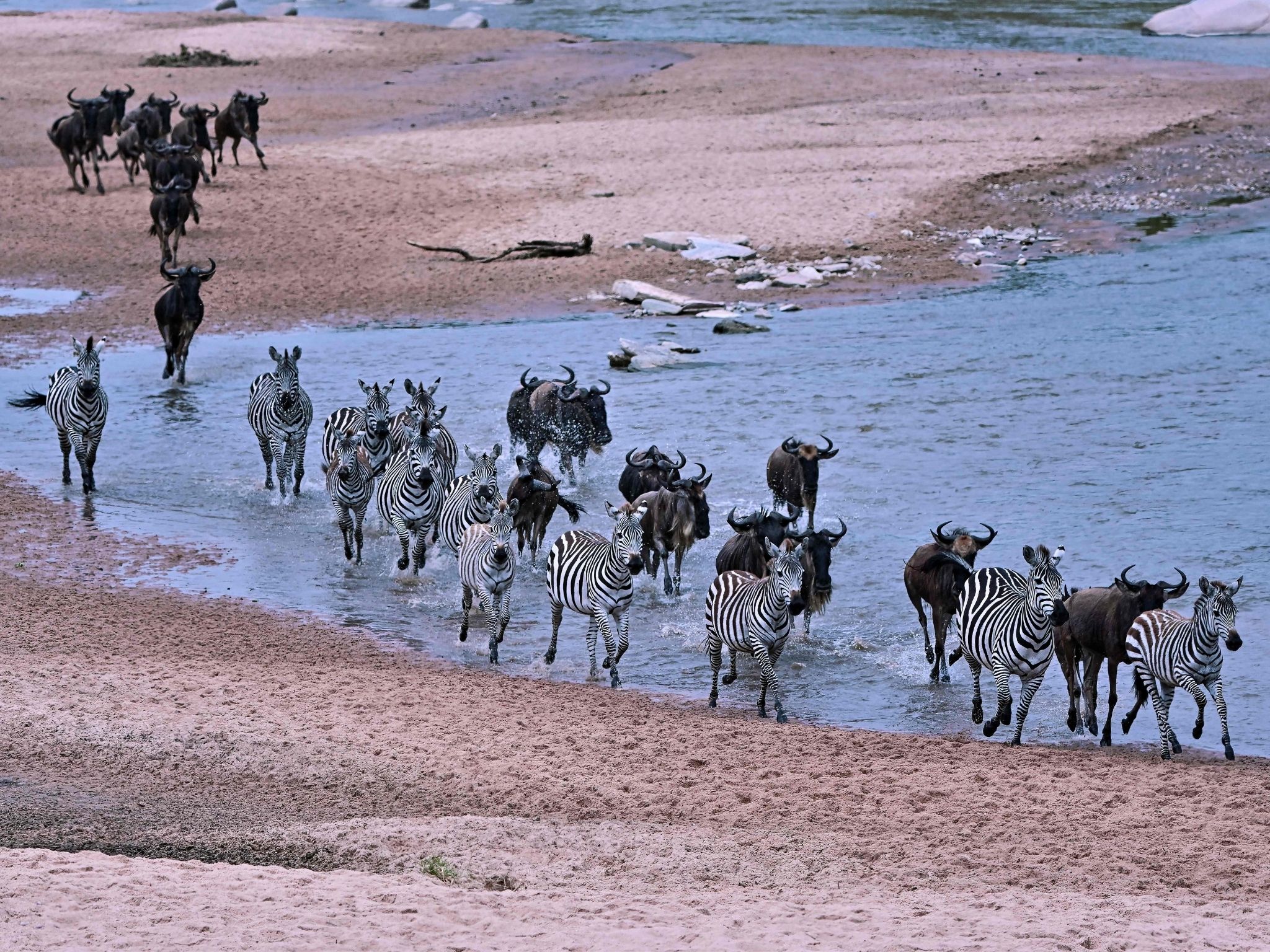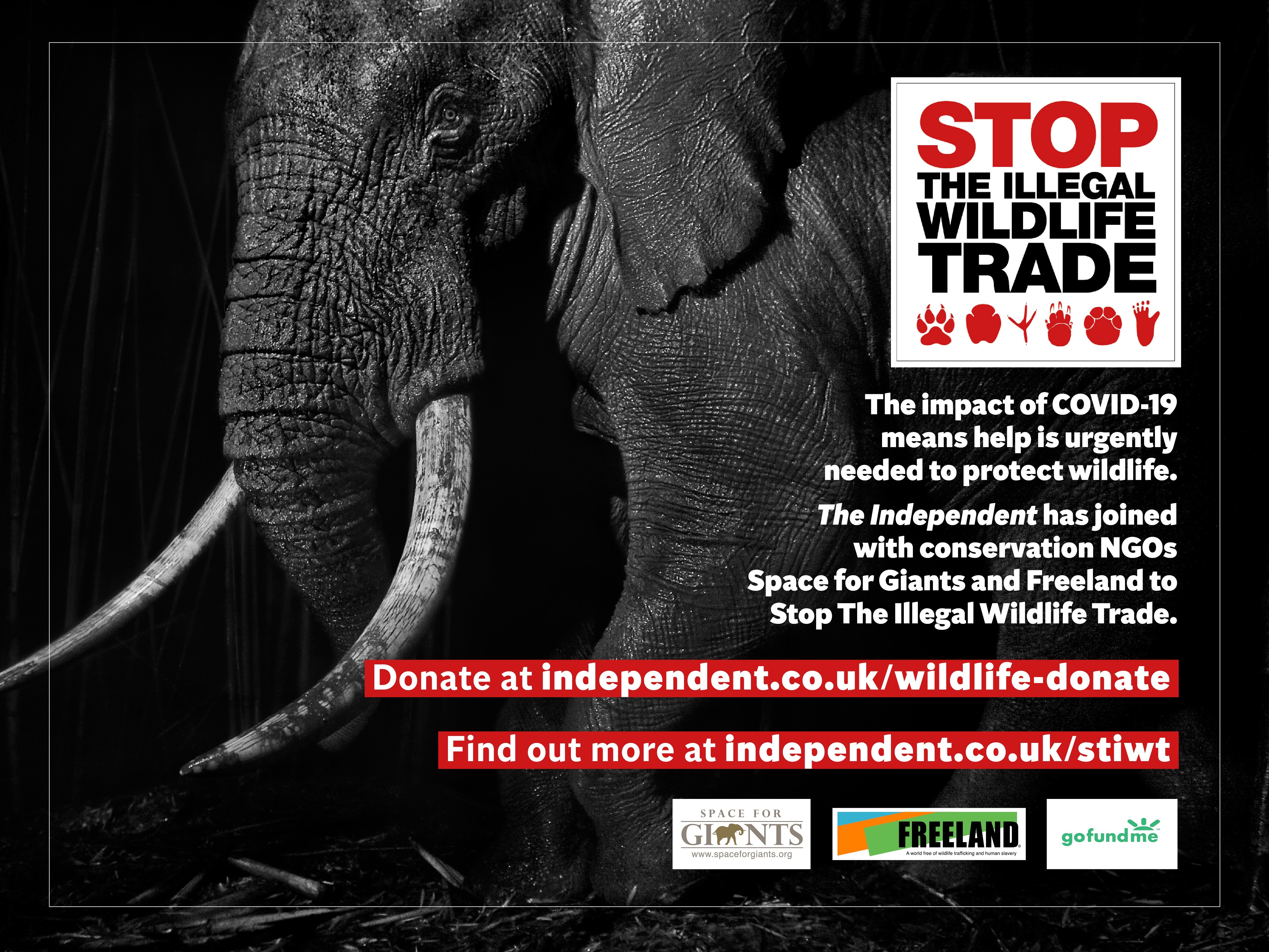Kenya’s pastoralist communities have proved resilient to Covid — and that’s good news for Africa’s wildlife
Those who usually depend on tourism have admirably refused turn to the illegal wildlife trade as a source of income during the pandemic

Your support helps us to tell the story
From reproductive rights to climate change to Big Tech, The Independent is on the ground when the story is developing. Whether it's investigating the financials of Elon Musk's pro-Trump PAC or producing our latest documentary, 'The A Word', which shines a light on the American women fighting for reproductive rights, we know how important it is to parse out the facts from the messaging.
At such a critical moment in US history, we need reporters on the ground. Your donation allows us to keep sending journalists to speak to both sides of the story.
The Independent is trusted by Americans across the entire political spectrum. And unlike many other quality news outlets, we choose not to lock Americans out of our reporting and analysis with paywalls. We believe quality journalism should be available to everyone, paid for by those who can afford it.
Your support makes all the difference.When Covid hit Africa, alarm bells started ringing among tourist professionals and conservationists alike. What impact would the sudden loss of tourism have on communities that depended on tourism? Would poaching increase as they struggled to feed their families? Would international wildlife criminals find it easier to tempt local people to poach for the illegal wildlife trade? The debate around the resilience of such communities to sudden “shocks”, especially in wildlife-critical areas, intensified. Clearly they would need to develop sustainable livelihoods that were not solely reliant on tourism.
As the pandemic evolves, however, a more complex and encouraging picture is emerging about the resilience of rural communities in times of crisis. Three community conservancies I have visited in Kenya during COVID – arguably those expected to suffer a devastating fallout from the collapse of tourism - offer a fascinating insight and case in point.
The first - Ol Malo in Northern Kenya – is a private wildlife conservancy owned and run by the Francombe family, who have set up The Samburu Trust with local Samburu Moran to preserve the land for both the Samburu and the local wildlife. The second - ll Ngwesi - is a high-end eco-lodge well known for being owned and operated entirely by the local Maasai community. Set within a conservation area designated for wildlife, it neighbours both Lewa wildlife conservancy and Borana ranch, and is a place I know well, having served on the board for several years.
Finally, Cottar’s 1920s camp in the south-eastern corner of the Maasai Mara is perhaps the quintessential exclusive upmarket safari camping experience on community land, in this case the Olderkesi Conservancy. Led by the Cottars Wildlife Conservation Trust (CWCT) and supported by the African Wildlife Foundation (where I am UK director), a four-stage plan with the Olderkesi Maasai is underway to extend the land under conservation and reopen historical wildlife migration routes to the south-east while supporting community livelihoods.
The good news is that in all three — and in contrast to the general narrative about Covid and tourism-dependent communities — there were no reports of an upsurge in poaching. Incidences of human-wildlife conflict remained an issue, but the wildlife was in good shape, with key indicator species including top predators all very much in evidence. At Ol Malo, we saw elephants moving comfortably through the conservancy and got close on horseback to giraffes with new calves. At Il Ngwesi, camera traps had caught images of leopard and resident lions, as well as rarely seen striped hyena and aardvark. And at Olderkesi in the Mara, we were treated to daily sightings of large prides of lions. All three lodges and camps have remained open, running with fewer staff on reduced salaries, and partnerships with local communities have hung on, albeit in survival mode. As one Il Ngwesi community member put it: ‘It’s just about food at the moment. We sell a goat or a sheep and if needed a cow to get food, and wait for better times.’ In this crisis at least, these communities have not resorted to poaching.
These community conservancy partnerships work because they benefit all parties. At Ol Malo, the Samburu Trust helps the local community to manage their livestock by providing water and grazing, as well as offering support in cases of human-wildlife conflict, and delivering healthcare and women’s employment through the exchange of beadwork for food. At Il Ngwesi, the eco-lodge provides local jobs, visiting tourists have renovated schools and clinics, and associated partnerships have supported livelihood projects and boosted community security. And at Olderkesi, Cottars 1920s and the CWCT provide employment and with support from the African Wildlife Foundation has plans to support cattle management and other livelihood initiatives alongside wildlife conservation.
These tourism-based partnerships are surviving, even with minimal benefits to communities currently, because they are long-standing and because all parties are mutually invested in a long-term vision. Alongside other community conservancy partnerships – such as Ewaso Lions in Kenya and the Ruaha Lion Project in Tanzania – they are delivering important lessons on what can stand the test of time. There is now no doubt that genuine community ownership, trust between parties, transparent communication and benefit sharing (not always cash) and effective leadership by those with sufficient gravitas in the community (not necessarily by those most educated) all drive success.
Stop the Illegal Wildlife Trade
We are working with conservation charities Space for Giants and Freeland to protect wildlife at risk from poachers due to the conservation funding crisis caused by Covid-19. Help is desperately needed to support wildlife rangers, local communities and law enforcement personnel to prevent wildlife crime. Donate to help Stop the Illegal Wildlife Trade HERE
But there is another important reason why these partnerships are holding. The three communities I visited are pastoralist. Livestock is the bedrock of the communities way of life and a safety net in times of crisis. Pastoralist areas are often significant for wildlife conservation as well as people because they make land productive that is often not suited to agriculture, while also allowing for biodiversity. In Africa the survival of many species depends on this type of community land that acts as a buffer between wildlife areas and human settlement, as well as providing a wildlife corridor from one protected area to another.
Ensuring this land supports biodiversity is key to the long-term future of people and wildlife alike. But pastoral land can be ecologically fragile, prone to drought and vulnerable to degradation through overgrazing. So in these areas, wildlife conservation is as much about the management of livestock as direct species protection. Building dams in different locations to provide seasonal water for cattle as the Samburu Trust has done. Improving the health of the cattle and incentivising smaller herds as at Olderkesi and other conservancies such as Enonkishu in the Maasai Mara. Or zoning the land to ensure that conservation areas for wildlife are protected, as at Il Ngwesi. And when drought hits, having flexibility built in.

The situation is very different to other locations in Africa, and indeed within Kenya such as Tsavo, where tarmac roads crisscross the land, ethnic groups mix with traders and hunting is still a way of life. Within Tsavo’s Lumo Conservancy, AWF incentivises local communities to protect wildlife through salaries and conservancy operations. But elsewhere in the region, bushmeat seizures by the Kenya Wildlife Service are showing an upsurge in hunting, with transboundary cartels selling bushmeat on both sides of the border. So here, AWF is supporting the Kenya Wildlife Service to deliver a more targeted anti-poaching campaign by providing detection dogs and handlers, and helping to bring wildlife criminals to justice.
Kenya offers a fascinating insight into local resilience during times of crisis and associated impacts on wildlife. Certainly, the minimal loss of iconic species such as elephant and rhino to the illegal wildlife trade is commendable and in part testament to the Kenyan Government’s strong law enforcement and strict legal penalties. But whilst hunting for bushmeat is still prevalent in specific areas, the much-feared widespread increase in poaching has not materialised, thanks in large part to where livelihood safety nets can be found, in the form of long-term conservation partnerships based on mutual trust, community ownership and the resilience of ancient pastoralist lifestyles. The Independent’s Stop the Illegal Wildlife Campaign is commendable in recognising that protecting endangered wildlife from the illegal wildlife trade is as much about these kinds of safety nets and the resilience of livelihoods as it is about convicting wildlife criminals. And as global awareness of the value of biodiversity and wildlife to our own survival increases, and the world takes greater steps to protect them, understanding these site-specific dynamics has never been more critical.
Dr Kirstin Johnson is the UK Director of the African Wildlife Foundation
Join our commenting forum
Join thought-provoking conversations, follow other Independent readers and see their replies
Comments